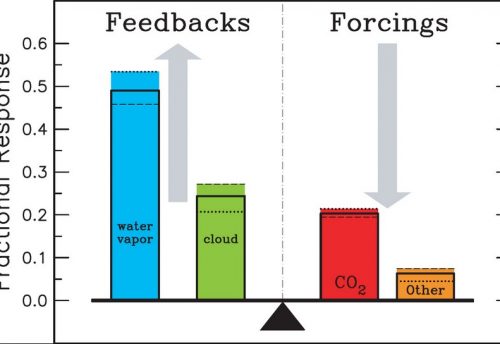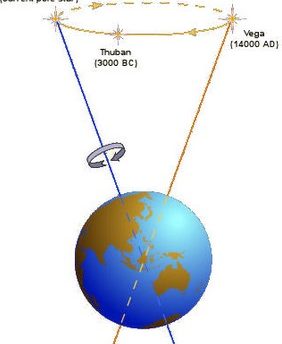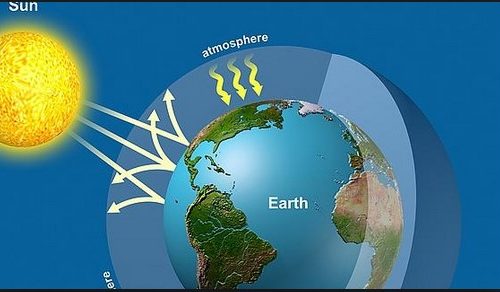From the modelled F-C relationships, the increase in radiative forcing due to the enhanced greenhouse gas concentrations can be calculated. Instrumental records exist for the most recent decades, whilst proxy data are used to calculate greenhouse gas concentrations earlier in the study period. Table 6.4 gives the concentration changes for five of the commonly known greenhouse gases, whilst Table 6.5 details their contribution to radiative forcing for a number of time intervals. Here, 1765 has been regarded as the onset of the Industrial Revolution.
Table 6.4. Changes in atmospheric concentration of the major greenhouse gases since 1750
|
Year |
CO2 (ppmv) | CH4 (ppbv) | N2O (ppbv) | CFC11 (pptv) | CFC12 (pptv) |
| 1765 | 279 | 790 | 275 | 0 | 0 |
| 1900 | 296 | 974 | 292 | 0 | 0 |
| 1960 | 316 | 1272 | 297 | 18 | 30 |
| 1970 | 325 | 1421 | 299 | 70 | 121 |
| 1980 | 337 | 1569 | 303 | 158 | 273 |
| 1992 | 355 | 1714 | 311 | 270 | 504 |
Table 6.5. Change in radiative forcing (Wm-2) due to concentration changes in greenhouse gases
|
Time period |
CO2 |
CH4 |
N2O |
CFC11 |
CFC12 |
Total |
| 1765-1900 |
0.37 |
0.1 |
0.027 |
0.0 |
0.0 |
0.53 |
| 1765-1960 |
0.79 |
0.24 |
0.045 |
0.004 |
0.008 |
1.17 |
| 1765-1970 |
0.96 |
0.30 |
0.054 |
0.014 |
0.034 |
1.48 |
| 1765-1980 |
1.20 |
0.36 |
0.068 |
0.035 |
0.076 |
1.91 |
| 1765-1990 |
1.50 |
0.42 |
0.10 |
0.062 |
0.14 |
2.45 |
Direct radiative forcing greenhouse gases (i.e. excludes radiative effects of ozone loss).
Changes in CO2 concentration over the last two centuries have contributed most to the greenhouse radiative forcing. Over the period 1765 to 1990, CO2 forcing has accounted for 61% of the total enhanced greenhouse forcing. Nevertheless, other greenhouse gases, in particular the halocarbons, are now accounting for an increasing proportion of the total greenhouse forcing, due to their relatively larger GWPs. The total increase in radiative forcing since 1765 is shown in Figure 6.7.
The total increase in direct radiative greenhouse forcing is approximately 2.5Wm-2 (Table 6.5). This value should be compared to the solar constant, 1368Wm-2, the amount of total solar radiation intercepted by the Earth. The average amount of radiation arriving at the top of the troposphere is about 270Wm-2. This figure is lower than the solar constant, for it takes into account the latitudinal and temporal variations in insolation.




Leave a Reply